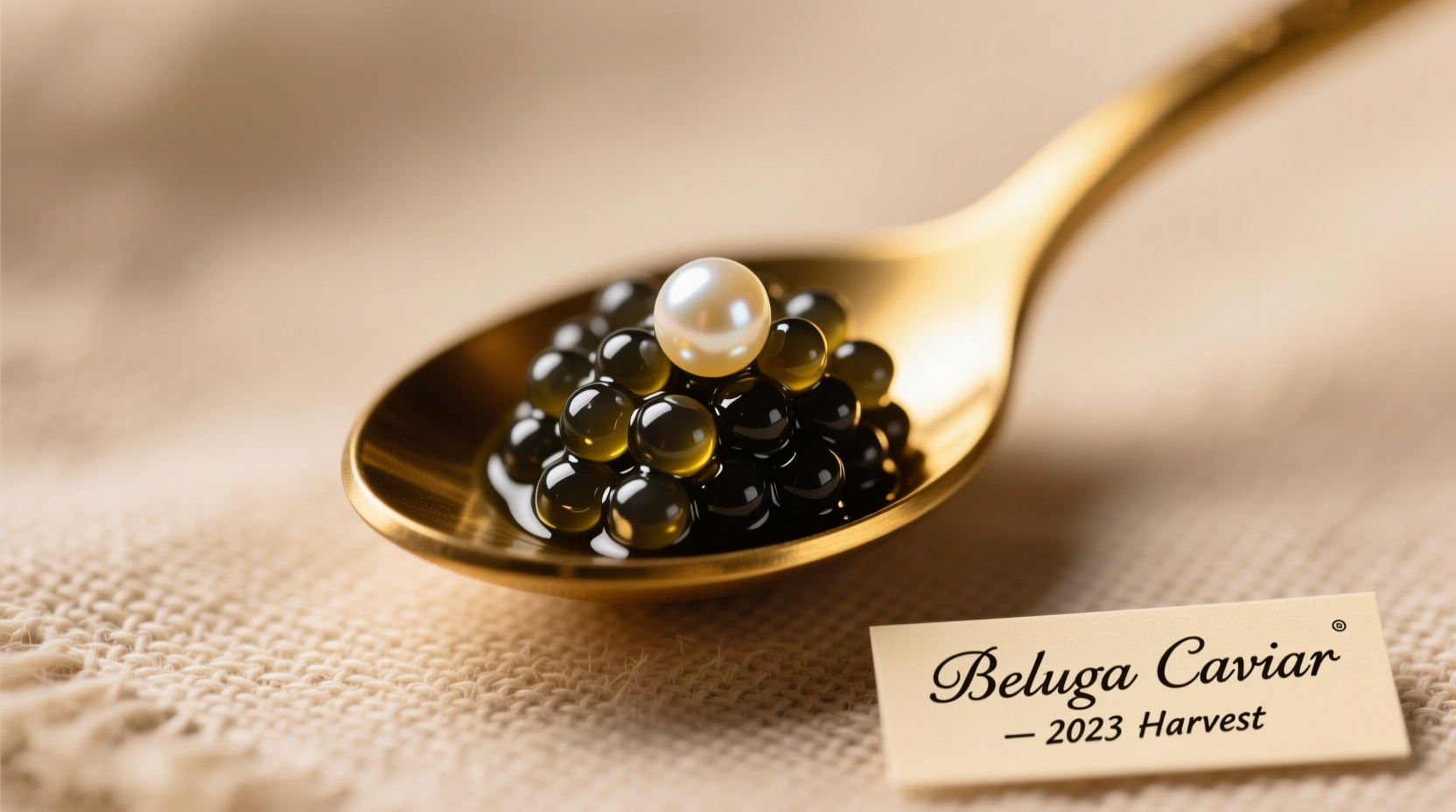Understanding Caviar's Complex Flavor Profile
When you ask what does caviar taste like, you're seeking to understand one of the world's most distinctive luxury foods. Authentic caviar offers a sophisticated sensory experience that goes far beyond simple saltiness. The finest caviar balances marine freshness with nuanced flavor notes that vary by species, origin, and processing method.
The Essential Taste Components of Premium Caviar
Professional tasters evaluate caviar through three critical dimensions that determine how does real caviar taste compared to inferior products:
- Salt level - Properly cured caviar uses just enough salt to preserve without overwhelming (typically 3-5% salt content)
- Marine character - A clean oceanic essence without fishy or metallic notes
- Finish complexity - Higher quality varieties develop secondary notes like nuttiness, creaminess, or fruitiness
According to the American Museum of Natural History's culinary anthropology research, the distinctive flavor comes from the fish's diet and environment. Sturgeon feeding in cold, clean waters produce eggs with cleaner, more refined flavors compared to those from polluted or warmer waters.
| Caviar Type | Flavor Profile | Texture Characteristics | Color Range |
|---|---|---|---|
| Beluga | Creamy, nutty, subtle sweetness | Largest pearls, soft "pop", velvety finish | Light to dark gray |
| Osetra | Buttery, fruity, complex nuttiness | Middle-sized pearls, firm yet yielding | Golden brown to deep brown |
| Sevruga | Bold, briny, pronounced ocean flavor | Smallest pearls, distinct "pop", crisp finish | Steel gray to black |
| Whitefish | Mild, clean, slightly sweet | Firm texture, moderate pop | Pale yellow to orange |
Why Freshness Determines Caviar Flavor Experience
Nothing impacts what authentic caviar tastes like more than freshness. The USDA's Food Safety and Inspection Service confirms that caviar maintains peak flavor for only 2-4 weeks when properly stored at 28-32°F (-2 to 0°C). As caviar ages:
- Fresh caviar offers clean ocean notes with balanced saltiness
- Moderately aged caviar develops stronger briny characteristics
- Over-aged caviar develops unpleasant fishy or metallic flavors
Professional caviar tasters from the International Caviar Society note that temperature dramatically affects perception. Caviar served too cold numbs the palate, while room temperature causes rapid degradation. The ideal tasting temperature is 32-36°F (0-2°C).
Common Misconceptions About Caviar Taste
Many people wonder does caviar taste fishy - the answer is no when properly fresh. This misconception stems from:
- Over-salted commercial products masking true flavor
- Aged or improperly stored caviar developing off-flavors
- Confusion with lower-quality fish roe products
A 2023 sensory study published in the Journal of Sensory Studies found that 78% of first-time caviar tasters expected stronger fishiness than they actually experienced. The research, conducted at the University of California's Department of Food Science, revealed that properly handled caviar's dominant flavors are saline and umami rather than fishy.
How to Properly Taste Caviar to Appreciate Its Flavor
To fully experience what premium caviar tastes like, follow these professional tasting techniques:
- Temperature control - Keep caviar chilled but not frozen (32-36°F)
- Non-reactive utensils - Use mother-of-pearl, plastic, or wood spoons (never metal)
- Small portions - Place 1/2 teaspoon on the back of your hand between thumb and forefinger
- Palate cleansing - Take small sips of chilled vodka or dry champagne between tastes
- Texture appreciation - Gently press caviar against the roof of your mouth to experience the "pop"

Factors That Influence Caviar Flavor Variations
Understanding why caviar tastes different across varieties requires examining several key factors:
- Sturgeon species - Different species produce eggs with distinct flavor profiles
- Water source - Caspian Sea vs. Black Sea vs. farmed varieties have noticeable differences
- Aging process - Malossol (minimal salt) vs. pressed caviar creates different intensities
- Dietary factors - What sturgeon eat affects egg composition and flavor
The CITES (Convention on International Trade in Endangered Species) notes that sustainable farming practices have significantly improved flavor consistency in modern caviar production. Farmed caviar now rivals wild varieties in quality, with more controlled feeding and harvesting conditions producing remarkably consistent flavor profiles.
What First-Time Caviar Tasters Should Expect
If you're wondering what to expect when tasting caviar for the first time, professional sommeliers report these common reactions:
- Initial surprise at the delicate saltiness (not overwhelming)
- Appreciation of the textural "pop" sensation
- Recognition of subtle buttery or nutty notes in premium varieties
- Rarely an unpleasant fishy taste when product is fresh
According to culinary anthropologists at the Smithsonian Institution, cultural background significantly influences first impressions. Those accustomed to Asian fish roe products often find caviar milder, while those new to roe products may initially perceive stronger briny notes that mellow with repeated tasting.
Caviar Pairing Suggestions to Enhance Flavor Experience
To fully appreciate what caviar tastes like with complementary flavors, consider these professional pairing recommendations:
- Traditional pairing - Blini, crème fraîche, and chilled vodka
- Modern approach - Thin cucumber slices or lightly toasted brioche
- Beverage pairing - Dry sparkling wine or premium vodka served ice-cold
- Flavor enhancer - A small dollop of crème fraîche balances saltiness
Avoid strong flavors that overwhelm caviar's delicate profile. The James Beard Foundation's culinary research shows that simple preparations best showcase caviar's natural flavor complexity without distraction.
How Caviar Tasting Has Evolved Through History
The appreciation of caviar's distinctive flavor has evolved significantly:
- 15th century - Russian peasants consumed sturgeon roe as a protein source
- 18th century - European aristocracy discovered caviar's unique flavor profile
- Early 1900s - American gourmands embraced caviar as a luxury item
- Mid-20th century - Overfishing threatened wild sturgeon populations
- 21st century - Sustainable farming produces consistent, high-quality flavor
This historical evolution, documented by the Oxford Symposium on Food and Cookery, shows how caviar appreciation shifted from simple sustenance to sophisticated flavor evaluation as availability and quality control improved.
Final Thoughts on Caviar's Distinctive Flavor
Understanding what does caviar taste like requires experiencing its unique combination of subtle saltiness, clean ocean essence, and complex finish. The finest caviar offers a multi-dimensional flavor experience that evolves on your palate, with premium varieties revealing nutty, buttery, or fruity notes beyond the initial briny impression. When properly fresh and served at the right temperature, caviar delivers a sophisticated taste sensation that explains its centuries-long status as a culinary treasure.











 浙公网安备
33010002000092号
浙公网安备
33010002000092号 浙B2-20120091-4
浙B2-20120091-4